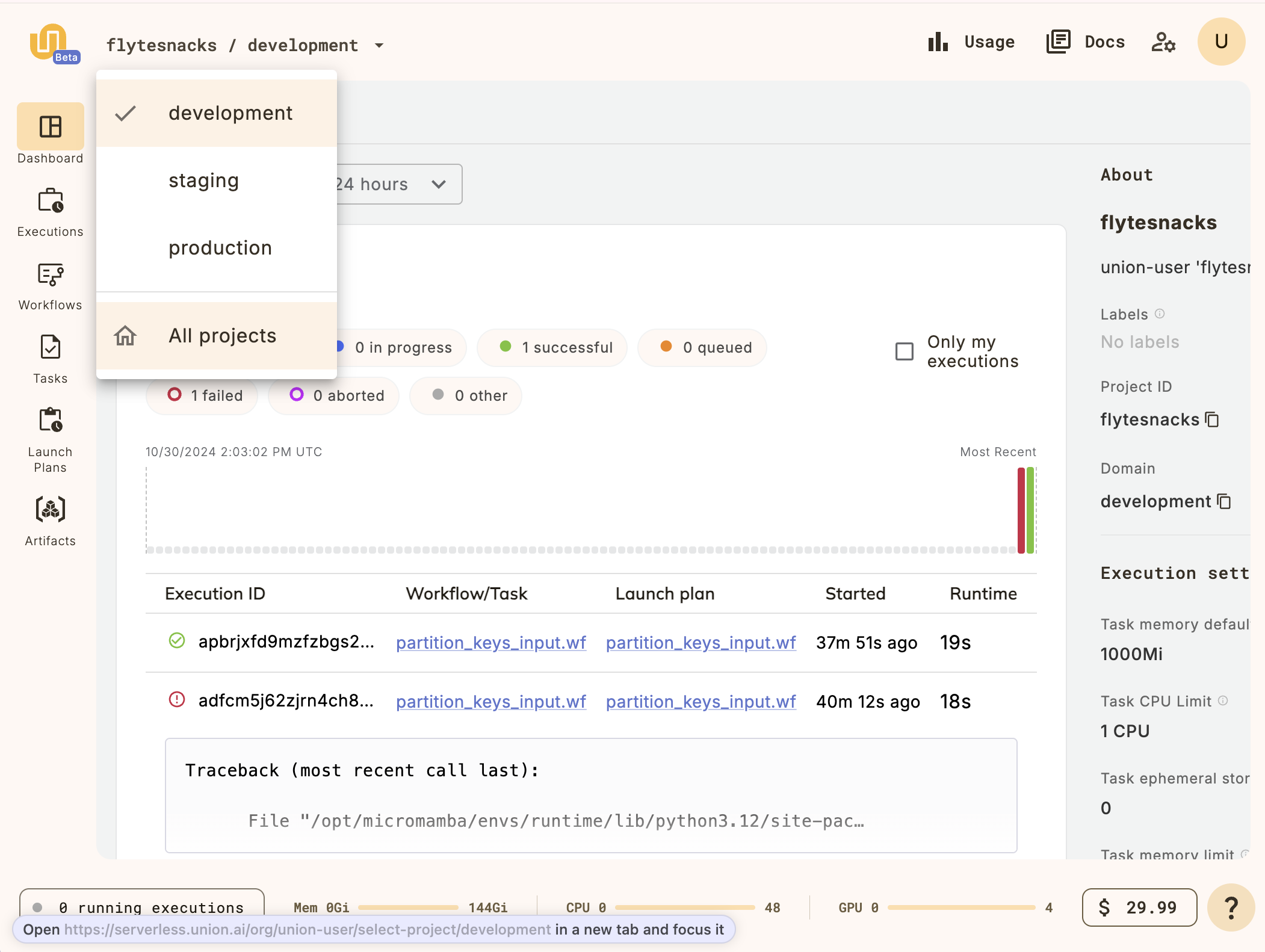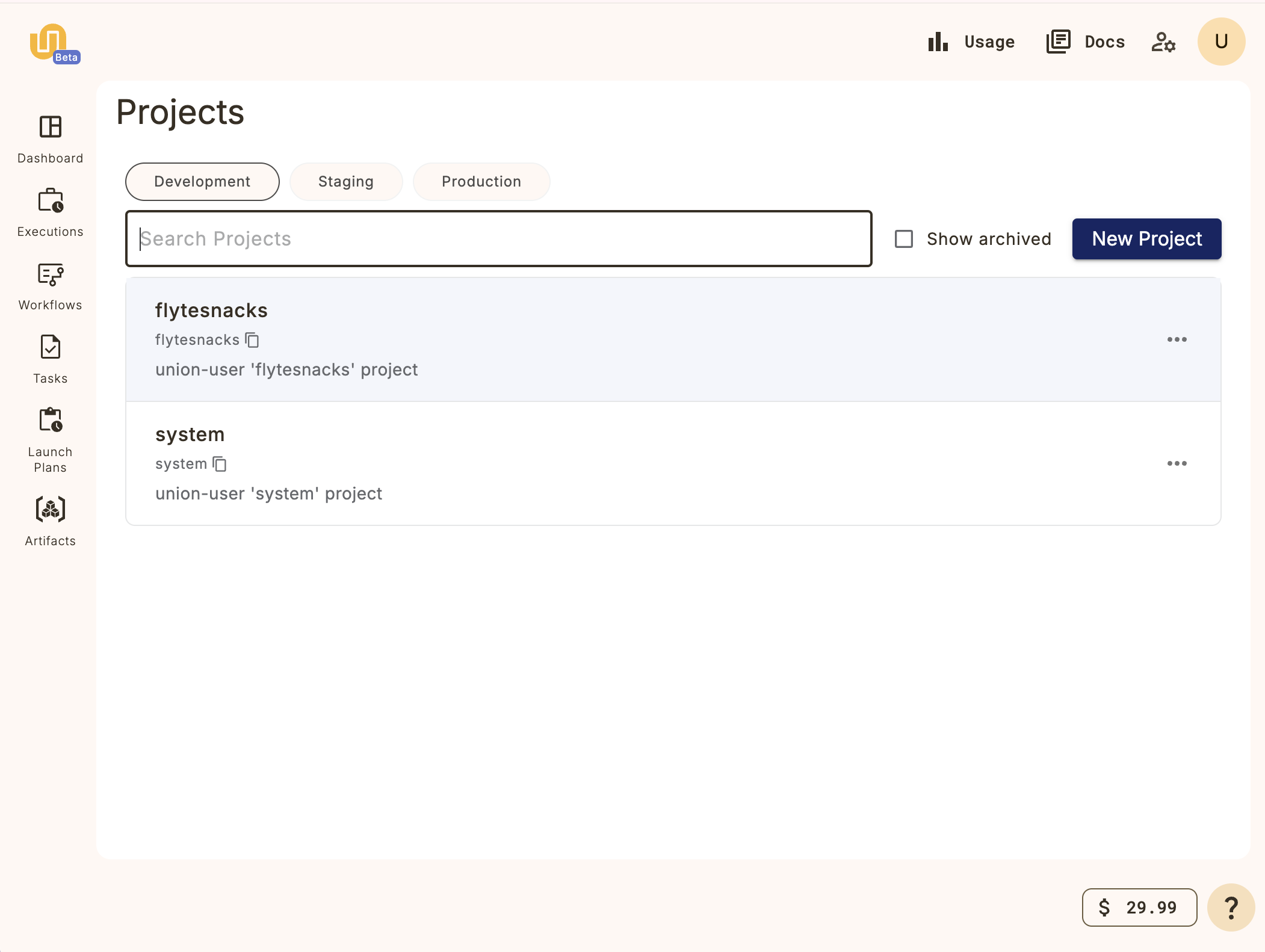Setting up a production project
In Union.ai, your work is organized in a hierarchy with the following structure:
- Account: Your account on Union.ai, tied to your GitHub identity.
- Domains: Within your account there are three domains,
development,staging, andproduction, used to organize your code during the development process. - Projects: Orthogonal to domains, projects are used to organize your code into logical groups. You can create as many projects as you need.
A given workflow will reside in a specific project. For example, let’s say my_workflow is a workflow in my_project.
When you start working on my_workflow you would typically register it in the project-domain my_project/development.
As you work on successive iterations of the workflow you might promote my_workflow to my_project/staging and eventually my_project/production.
Promotion is done simply by re-registering the workflow to the new project-domain.
Terminology
In everyday use, the term “project” is often used to refer to not just the Union.ai entity that holds a set of workflows, but also to the local directory in which you are developing those workflows, and to the GitHub (or other SCM) repository that you are using to store the same workflow code.
To avoid confusion, in this guide we will stick to the following naming conventions:
- Union.ai project: The entity in your Union.ai instance that holds a set of workflows, as described above. Often referred to simply as a project.
- Local project: The local directory (usually the working directory of a GitHub repository) in which you are developing workflows.
Create a Union.ai project
You can create a new project in the Union.ai UI by clicking on the project breadcrumb at the top left and selecting All projects:

This will take you to the Projects list:

Click on the New Project button and fill in the details for your new project.
You now have a project on Union.ai into which you can register your workflows. The next step is to set up a local workflow directory.
Creating a local production project directory using union init
Earlier, in the
Getting started section we used union init
to create a new local project based on the union-simple.
Here, we will do the same, but use the union-production template. Perform the following command:
$ union init --template union-production my-projectDirectory structure
In the basic-example directory you’ll see the following file structure:
├── LICENSE
├── README.md
├── docs
│ └── docs.md
├── pyproject.toml
├── src
│ ├── core
│ │ ├── __init__.py
│ │ └── core.py
│ ├── orchestration
│ │ ├── __init__.py
│ │ └── orchestration.py
│ ├── tasks
│ │ ├── __init__.py
│ │ └── say_hello.py
│ └── workflows
│ ├── __init__.py
│ └── hello_world.py
└── uv.lockYou can create your own conventions and file structure for your production projects, but this tempkate provides a good starting point.
However, the separate workflows subdirectory and the contained __init__.py file are significant.
We will discuss them when we cover the
registration process.